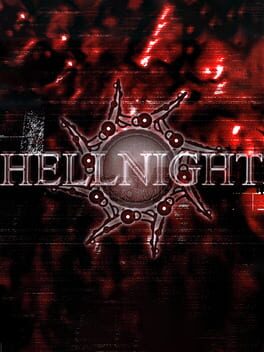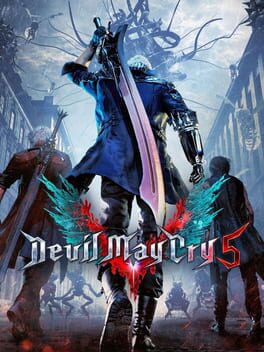Tenzin
Bio
5 - Masterpiece
4.5 - Excellent
4 - Great
3.5 - Solid
3 - Mixed-positive
2.5 - Mixed
2 - Mixed-negative
1.5 - Poor
1 - Bad
0.5 - Terrible
5 - Masterpiece
4.5 - Excellent
4 - Great
3.5 - Solid
3 - Mixed-positive
2.5 - Mixed
2 - Mixed-negative
1.5 - Poor
1 - Bad
0.5 - Terrible
Badges

1 Years of Service
Being part of the Backloggd community for 1 year

Noticed
Gained 3+ followers

Liked
Gained 10+ total review likes
013
Total Games Played
000
Played in 2024
000
Games Backloggd
Recently Reviewed See More
It's like a Kenji Eno game but not as good, though I have to say how much I enjoyed crawling through this game's subterranean environment. The layers under the Tokyo subway system, built by the imperial army taken up by dwellers and cultists and monsters. That PS1 draw distance and those shifting textures; eerie, atmospheric, and just a pleasure to uncover.
The rest of the game? A lot of wasted opportunities. You spend a lot of it avoiding monsters in pursuit, but they all just look like goofy crash test dummies. I don't feel like it would have taken much paired with the environments to make this a frightening experience, but somehow they sidestepped that. The adventure game and puzzle aspects are on the rigid and easy side. I understand there are different character interactions and means of progressing, but the ones I encountered weren't compelling enough to make me wonder about the alternatives.
But I have to give the game credit for getting as abstract as it does. The later stages are in these dark, colourful, cyber-spiritual landscapes that really worked for me. The characters and narrative at that point were too far gone for me to understand or care about, but it held my attention to the end with its variety of bizarre spaces.
Hard to call this a good game on a functional or genre basis, but walking around weird, moody places is worth something to me.
The rest of the game? A lot of wasted opportunities. You spend a lot of it avoiding monsters in pursuit, but they all just look like goofy crash test dummies. I don't feel like it would have taken much paired with the environments to make this a frightening experience, but somehow they sidestepped that. The adventure game and puzzle aspects are on the rigid and easy side. I understand there are different character interactions and means of progressing, but the ones I encountered weren't compelling enough to make me wonder about the alternatives.
But I have to give the game credit for getting as abstract as it does. The later stages are in these dark, colourful, cyber-spiritual landscapes that really worked for me. The characters and narrative at that point were too far gone for me to understand or care about, but it held my attention to the end with its variety of bizarre spaces.
Hard to call this a good game on a functional or genre basis, but walking around weird, moody places is worth something to me.
About 95% fan service. There are a lot of options here, but I'm skeptical if many of them are useful. The best tools just seemed to be the ones that keep the punching bag enemies close by, as they have a bad habit of bouncing away every second hit. There's real some effort put into making the characters play differently, but V feels a bit antithetical and doesn't gel as well with the character-focused camera.
The environments ended up being a big sticking point. If you're lucky, you're playing a level set in an anonymous, vacant, chunked up cityscape or tunnel that's more invisible wall than interactable terrain. If you're not doing that, you're playing through what looks like a devil's ribcage or colon. I get it's hard to care about what's happening in these games, but it would have been nice to feel like I'm somewhere rather than nowhere in particular.
Nero seems like the protagonist, as the plot effects his health and emotions the most. He also actually interacts with the supporting cast, but no, this is game is about legacy. It's Dante vs Virgil, with the series once again trying to live up to and recreate its finest moment. "How many times have we fought?" says Virgil at one point. I've lost count myself, but rest assured there are a couple more in this one, and then it ends at a point that would be more interesting to play through and develop than the entire game that preceded it.
It's baffling and underwhelming, even to me, someone who's mostly ambivalent to the series.
The environments ended up being a big sticking point. If you're lucky, you're playing a level set in an anonymous, vacant, chunked up cityscape or tunnel that's more invisible wall than interactable terrain. If you're not doing that, you're playing through what looks like a devil's ribcage or colon. I get it's hard to care about what's happening in these games, but it would have been nice to feel like I'm somewhere rather than nowhere in particular.
Nero seems like the protagonist, as the plot effects his health and emotions the most. He also actually interacts with the supporting cast, but no, this is game is about legacy. It's Dante vs Virgil, with the series once again trying to live up to and recreate its finest moment. "How many times have we fought?" says Virgil at one point. I've lost count myself, but rest assured there are a couple more in this one, and then it ends at a point that would be more interesting to play through and develop than the entire game that preceded it.
It's baffling and underwhelming, even to me, someone who's mostly ambivalent to the series.
A convoluted, morbid, schizophrenic story about a doomed test rat trying murder its human handler and finding friendship and appreciation for life along the way. I don't know how the developers decided to merge this story with this gameplay design, but I'm guessing it was early on because the rhythm mechanics are integrated into the story, even though it's a little tough to discern what it's all about most of the time.
I dig this game because it provides a sense of control that's not really like anything else I've played. Most rhythm platformers are so linear they might as well be conventional rhythm games, but this one's gracious enough to give you a refreshing selection of movement options that are all useful and even behave differently depending on what resources you've expended. Due to the rhythmic nature of the hazards, being able to suspend movement or move slowly can be just as important---it's surprisingly robust and instinctual.
The design of the stages feel loose and open, which again, isn't what rhythm or even modern precision platformers usually go for. This ends up complimenting the design; it allows for experimentation, optimization, and expression on the part of the player. No, the levels aren't not that complex and they aren't themed all that well, but moving around them on the beat is a consistently interesting and free-form endeavor.
It's a nice surprise because I was expecting the usual: a conventionally designed game with story or presentation quirks. It's a more pleasing inverse: a quirky and original design that probably could have been a true classic if it was presented in way that was as tight and original as the gameplay.
I dig this game because it provides a sense of control that's not really like anything else I've played. Most rhythm platformers are so linear they might as well be conventional rhythm games, but this one's gracious enough to give you a refreshing selection of movement options that are all useful and even behave differently depending on what resources you've expended. Due to the rhythmic nature of the hazards, being able to suspend movement or move slowly can be just as important---it's surprisingly robust and instinctual.
The design of the stages feel loose and open, which again, isn't what rhythm or even modern precision platformers usually go for. This ends up complimenting the design; it allows for experimentation, optimization, and expression on the part of the player. No, the levels aren't not that complex and they aren't themed all that well, but moving around them on the beat is a consistently interesting and free-form endeavor.
It's a nice surprise because I was expecting the usual: a conventionally designed game with story or presentation quirks. It's a more pleasing inverse: a quirky and original design that probably could have been a true classic if it was presented in way that was as tight and original as the gameplay.


